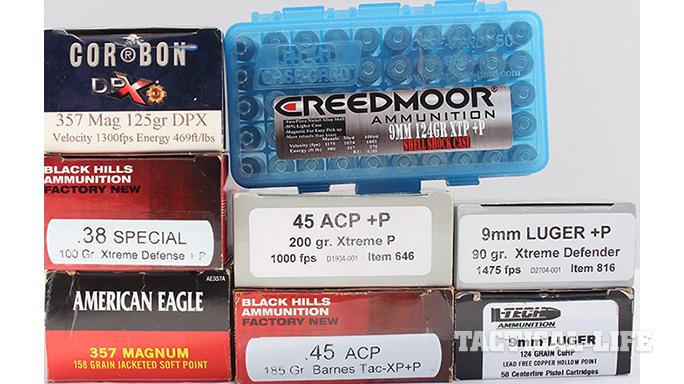


Advertisement — Continue Reading Below



Advertisement — Continue Reading Below



Advertisement — Continue Reading Below

Before the 1930s were over, major ammunition companies were making special “Hi-Way Master,” “Highway Patrol” and other anti-vehicle loads in .45 ACP, .38 Special and .357 Magnum, and soon urban legends about “block-busting” calibers became commonplace in American folklore.
Today, many law enforcement and military shootouts take place in and around cars, and gangs still do drive-bys. Dealing with criminals shooting from cars is so important that the FBI’s ballistic testing protocol includes tests that measure bullet performance against simulated car doors and windshields, and other agencies conduct similar tests. Over the years, I’ve spoken with a number of law enforcement trainers on the subject, witnessed a number of bullet-penetration tests against various barriers and shot a few cars myself. In the process, I’ve become aware of the special concerns that arise when using firearms to engage active shooters in automobiles. Given this, it’s time to separate some of the wheat from the chaff.
Advertisement — Continue Reading Below
Common Myths
The myth of the “block-buster” is one of two major misunderstandings about what happens when bullets and automobiles collide under hostile circumstances. The second misconception is that a car makes good cover.
As for the myth of a bullet busting the engine block, some bullets will shoot through a fender and then partially penetrate an engine block. But this doesn’t mean that the car will stop dead in its tracks. Depending on the bullet used and where it enters an engine block, the car might quickly roll to a stop, or it could run for a long time at a reduced level of performance. That’s why soldiers who need to stop motor vehicles aim for the driver and not the engine. Putting the driver out of commission guarantees that a suspect vehicle will eventually stop, at least until the driver can be replaced. Unfortunately, a shot at the engine or the driver can also send a car out of control and create the possibility of serious harm to innocents, so shooting at moving vehicles is something that’s only done in extreme circumstances.
Busting an engine block may be difficult, but many modern street loads containing bonded JHP and solid-copper or gilding-metal bullets will easily shoot through car doors, seats and windows. Even military ball ammunition will get through vehicle windows, seats and doors. Ball rounds are prone to deflecting, but the close quarters within cars still make this ammo a lethal threat to an automobile’s occupants. This has been a real problem for soldiers deployed to the Middle East. They often refer to cars as “bullet magnets.” Enemy soldiers like to pour fire into vehicles so they can trap the occupants and quickly finish the fight.
Advertisement — Continue Reading Below
We’ve done quite a bit of shooting at cars at the Big 3 East Training Center, and it’s amazing how quickly pistol and rifle bullets can thoroughly contaminate the interior of a stopped motor vehicle. Cars can offer concealment, but for most purposes they won’t serve as effective cover unless they’re moving at over 30 miles per hour. At that speed, the forward movement of the car’s curved steel and glass surfaces increases the tendency of bullets to deflect. This also presents a risk to bystanders. So it’s another reason not to shoot at moving cars unless absolutely necessary.
As it turns out, an automobile was left over from the last Big 3 East event, and although the car had been previously shot, there was enough free space on the body and on the windshield that it was possible to run a few penetration tests. So, I shot at the engine block through the fender and also into the interior through intact areas of the windshield, driver’s side door and even the trunk to test the urban legend of the “block-buster” and the myth that cars provide cover. Watch the video below to see the results.
This article was originally published in “Combat Handguns” July/August 2017. To order a copy, visit outdoorgroupstore.com.
Advertisement — Continue Reading Below























